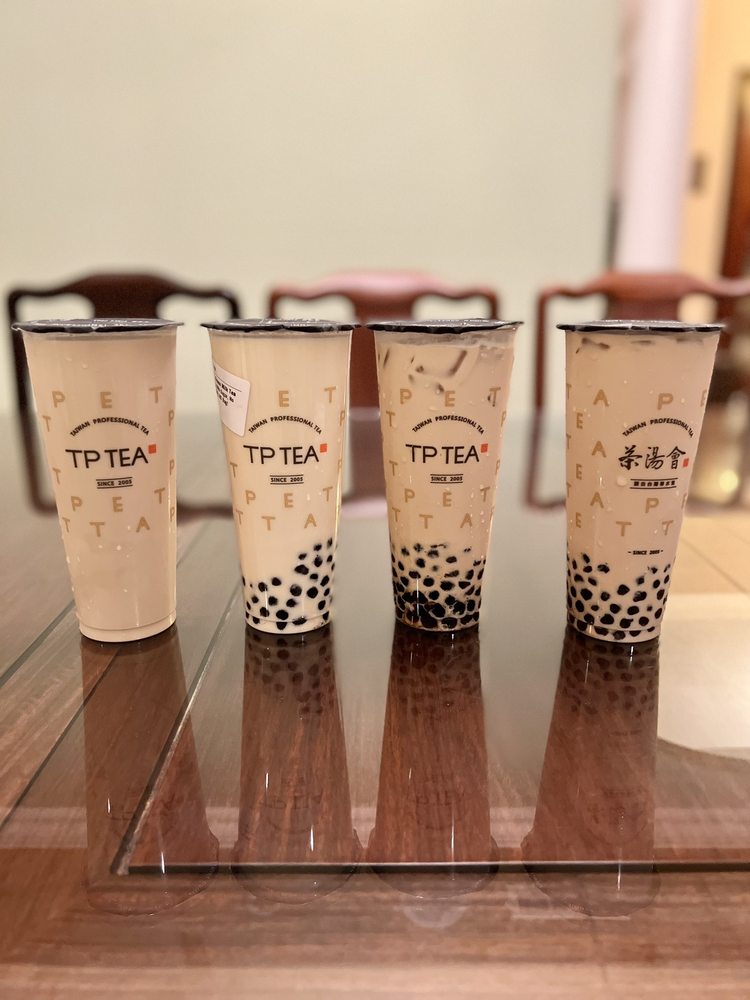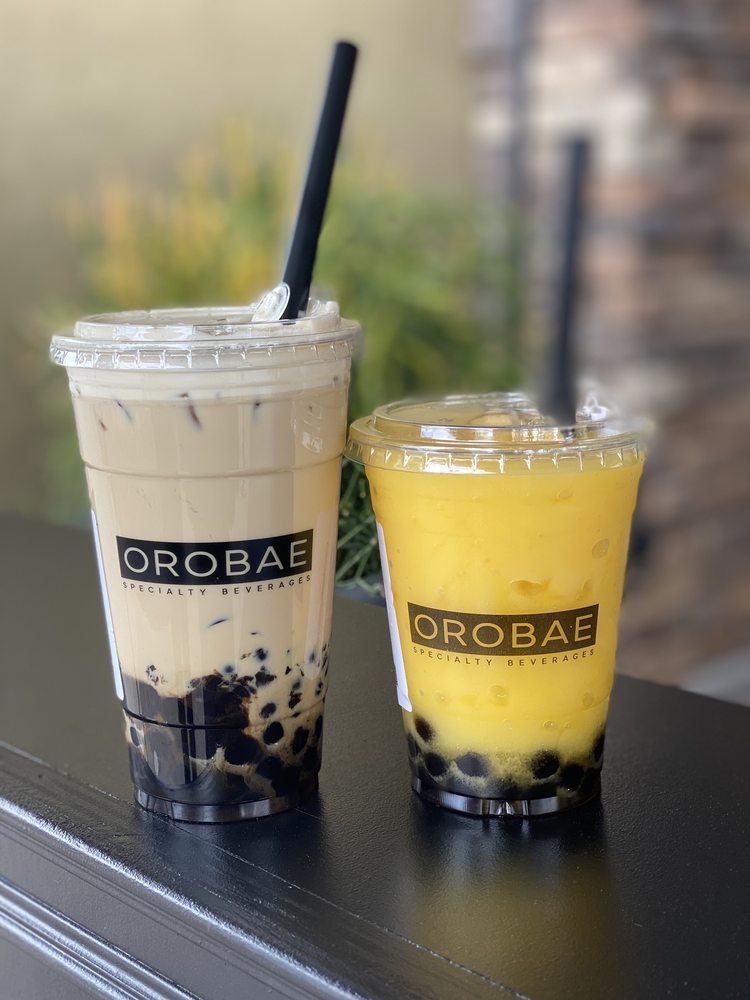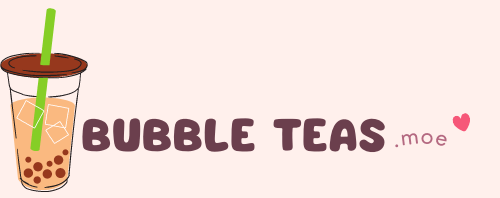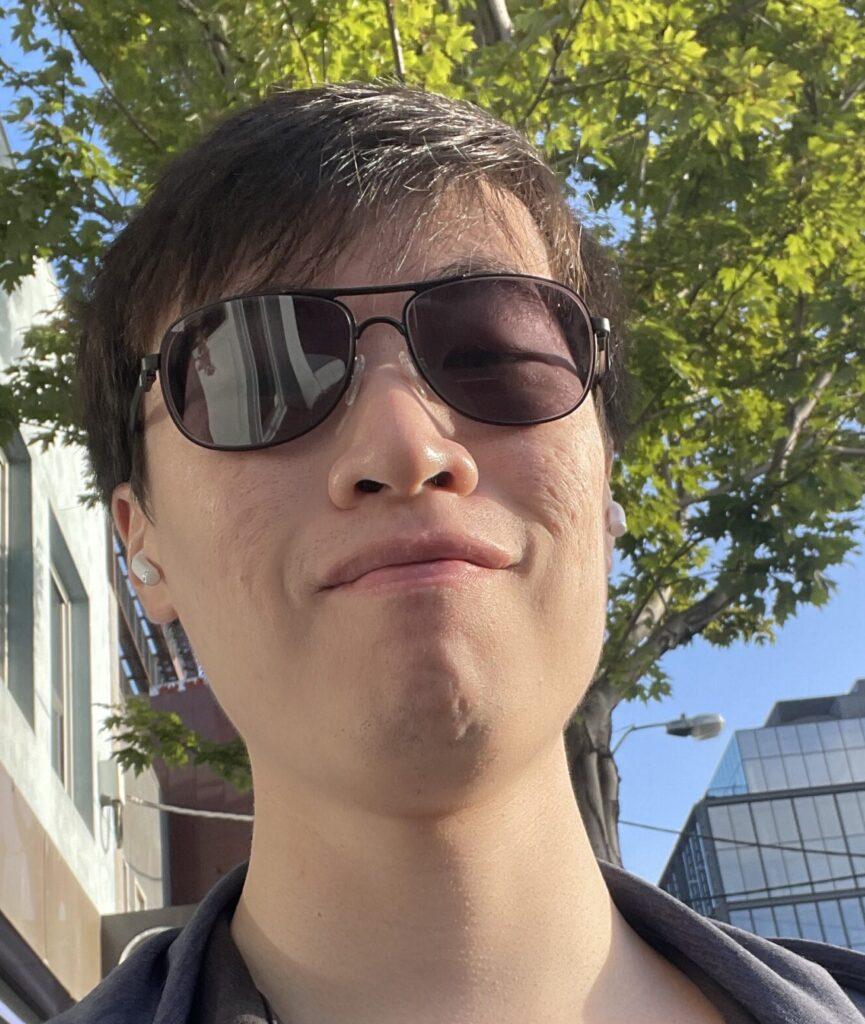So, you’ve seen the hype around bubble tea or as it’s also known as, boba. Your kids have probably been begging to try this trendy Taiwanese drink. But is boba good for kids? Well, let’s dive right into it.
The basic version of this drink typically consists of black tea, milk and chewy tapioca pearls (also known as boba balls) at the bottom. While the fruity flavors and unique texture can make bubble tea a tasty treat for your little ones, there are some factors that you should consider before letting them sip on these popular drinks.
First off, bubble tea consumption isn’t exactly low-calorie. Depending on how it’s made and what ingredients are added in; a single serving could pack up to 500 calories and over 50 grams of sugar! That’s more than twice the amount recommended by American Academy of Pediatrics for children per day. The high sugar content may not only contribute to weight gain but also lead to dental problems in young ones.
Understanding What Boba in Bubble Tea Is
So, what exactly is boba? You might’ve heard it referred to as bubble tea, tapioca pearls drink, or even just a ‘kids drink.’ Originating from Taiwan, this popular beverage has made its way across the globe and into the hearts (and bellies) of people of all ages. It’s not just a Taiwanese tea-based drink anymore; it’s become an international sensation.
Boba typically consists of tea – black tea, green tea or fruit teas being the most common bases – mixed with milk and sweetened with sugar. But what sets boba apart are those chewy tapioca balls that settle at the bottom of your cup. They’re fun to chew on while you enjoy your drink!
But here comes the million-dollar question: Is this tasty treat safe for kids to consume? Many parents may have their doubts due to concerns over choking hazards and high sugar content. While these are valid points worth considering, it doesn’t mean that kids can’t enjoy bubble tea responsibly.
Now let’s talk about how bubble tea consumption can vary widely. There are many versions of this Taiwanese beverage out there! From popping boba with fruity flavors bursting in every sip to milk teas containing different levels of caffeine depending on whether they’re based on black or green teas.
Keep in mind though that like any other food item – moderation is key when letting children indulge in treats such as boba drinks. The American Academy of Pediatrics recommends limiting added sugars in children’s diets due to potential health risks such as dental problems and obesity related issues.
Breaking Down the Nutritional Content of Boba Tea
Diving right into it, let’s talk about what boba, also known as bubble tea or tapioca pearl tea, is. This Taiwanese drink typically consists of tea (usually black or green), milk, sugar, and chewy tapioca pearls. It’s a tasty treat enjoyed by people of all ages around the world. But is this kid-friendly drink really safe for kids to consume?
When you order a boba drink for your child at a café or make bubble tea at home, you’re serving them more than just a sweet beverage. The nutritional content of this popular Taiwanese tea-based concoction can be quite surprising.
Let’s start with the sugar content – an important aspect many parents should be mindful about when it comes to children and adolescents’ diet. According to the American Academy of Pediatrics (AAP), kids aged 2-18 years should not consume more than 25 grams (6 teaspoons) of added sugars per day. However, some versions of this tasty treat can contain up to 50 grams! That’s double the recommended limit!
| Age Group | Recommended Daily Sugar Limit | Average Sugar in Boba |
|---|---|---|
| Kids aged 2-18 years | <=25g/6tsp per day | Up to 50g |
Next on our list is caffeine – another concern when we talk about drinks suitable for young ones. Black teas and even some green teas used as base in boba drinks contain caffeine which may not be suitable for all kids.
But don’t despair yet! There are many varieties that offer fruity flavors using fruit teas instead which are often caffeine-free making them safe options if your little one wants to enjoy bubble tea without any potential risks associated with caffeine intake.
As far as calories go – depending on its size and ingredients used – a single serving can reach up to an astonishing 500 calories. That’s a hefty amount considering the recommended daily calorie intake for children ranges from 1000-2000 calories based on their age and physical activity.
Finally, it’s important to address one more issue that many parents might not consider – the boba pearls themselves. These chewy tapioca balls can pose a choking hazard for children, particularly those under four years old.

How Boba Can Impact Kids’ Sugar Intake When They Drink Bubble Tea
Let’s face it, kids love sweet treats. And one of those treats that’s been making a splash in recent years is boba tea, also known as bubble tea. Originating from Taiwan, this tasty treat typically consists of black or green tea mixed with milk and chewy tapioca pearls. It sounds like a fun drink for your little ones to enjoy, right? However, the question remains: is this popular Taiwanese drink safe for kids?
When talking about whether boba drinks are kid-friendly, you can’t ignore the elephant in the room – sugar content. According to the American Academy of Pediatrics (AAP), children and adolescents should consume less than 25 grams of added sugar per day. Now compare that with a single serving of bubble tea which often contains more than 50 grams of sugar! That’s twice as much as they should be consuming daily.
Not only does such high amount of sugar pose potential risks like dental problems and obesity; it can also create unhealthy eating habits early on in life. Furthermore, many versions of the drink come loaded with creamy toppings and fruity flavors adding extra calories – sometimes up to 500 calories per serving!
Another point worth noting is that while fruit teas might seem healthier due to their fruity flavours, they’re not always better choices either. Even though these versions often contain real fruit juices instead popping boba pearls – which are essentially fruit juice-filled tapioca balls – these still contribute significantly to the overall sugar content.
As if all this weren’t enough to give parents pause before letting their children indulge in this Taiwanese tea-based treat regularly; there’s also concern over caffeine content since both green and black teas contain caffeine albeit at lower levels compared to regular tea or coffee.
Lastly but by no means least important: The main ingredient itself- chewy tapioca pearls- poses a choking hazard for young children who might not yet have mastered the skill of chewing thoroughly before swallowing.
In light of all these factors, it’s safe to say that while an occasional boba drink might be a fun treat for your kids, regular consumption could lead to potential health risks. Therefore, it’s best to consider bubble tea as an occasional indulgence rather than a regular part of your child’s diet.
The Role of Caffeine in Boba Drinks Such as Milk Tea
Boba, also known as bubble tea, is a Taiwanese drink that’s become a trendy treat among kids and adults alike. It typically consists of black or green tea, milk, and chewy tapioca pearls. But is this kid-friendly beverage safe for your little ones to consume regularly? Let’s delve into the role caffeine plays in boba drinks.
The tea base used in making bubble tea – whether it’s black or green – naturally contains caffeine. While many parents let their children enjoy a cup of regular tea without concern, it’s important to remember that boba teas contain more than just the average amount of caffeine found in regular teas.
This increase can be attributed not only to the type of tea used but also to how these Taiwanese beverages are prepared. In order to create those tasty fruity flavors loved by many, some versions of the drink require additional ingredients like fruit extracts and syrups which may further enhance its caffeine content.
So what does this mean for your child’s bubble tea consumption? According to the American Academy of Pediatrics (AAP), children and adolescents should ideally avoid consuming caffeinated products altogether due to potential health risks such as dental problems caused by high sugar content.
Now you might ask: “Is there any version safe for my kids?” Well, there are varieties with lower levels or no caffeine at all such as fruit teas made from decaffeinated bases or even popping boba made with juice instead of traditional tapioca pearls! However, they still often have high amounts of added sugars so it’s best consumed sparingly.
Boba and Dental Health: What You Need to Know To Make Tea Safe For Kids
When you’re sipping on that deliciously sweet boba tea, have you ever stopped to think about the impact it might be having on your kids’ dental health? Let’s dive in and get the facts straight.
Boba, also known as bubble tea or pearl milk tea, is a Taiwanese drink that typically consists of black or green tea mixed with milk or fruit juice, along with chewy tapioca pearls at the bottom. It’s become an incredibly popular treat worldwide – not just for adults but for many kids too. But while this tasty treat may satisfy your child’s sweet tooth, it’s worth noting that the American Academy of Pediatrics warns against children and adolescents consuming drinks with high amounts of added sugar.
So why exactly is boba a potential concern when it comes to your kid’s dental health? One reason lies in those delightful little boba balls themselves – those chewy tapioca pearls are packed full of starches which can stick around in your child’s mouth longer than other foods. This can lead to cavities if not properly cleaned out.
Next up is sugar content – a regular-sized 16-ounce boba drink can contain upwards of 50 grams of sugar! That’s double what the American Heart Association recommends as a daily intake for kids. Not only does this pose potential risks for obesity and diabetes down the line, but all that sugar could wreak havoc on your child’s teeth.
Then there’s caffeine content – both black tea and green teas contain caffeine. While an occasional cup likely won’t harm most older children or teenagers (it’s always best to consult their pediatrician first), younger children may be more sensitive.
In short, while enjoying bubble tea from time to time shouldn’t cause major issues if balanced with good oral hygiene habits – frequent consumption could potentially contribute towards dental problems in kids due to its high sugar content and the nature of chewy tapioca pearls.
Therefore, it’s essential to make sure your kids brush their teeth thoroughly after they drink bubble tea and limit its consumption to occasional treats. You could also opt for versions of the drink that contain less sugar or even make bubble tea at home so you can control what goes in it!

Possible Allergic Reactions to Boba Ingredients When Kids Drink Boba
When it comes to your kids enjoying that tasty treat known as boba tea, you might be wondering: is this Taiwanese drink safe for them? While many parents allow their children to indulge in the wide range of fruity flavors offered by bubble tea drinks, there are some potential risks worth considering.
One concern is possible allergic reactions to boba ingredients. Some people may have a sensitivity or allergy to the tapioca pearls, also known as boba balls, which are a key component of this Taiwanese tea-based beverage. These chewy tapioca balls can sometimes cause an allergic reaction resulting in symptoms like itching, swelling and breathing difficulties.
Another factor you need to keep in mind is the high amount of sugar often found in these kid-friendly drinks. According to the American Academy of Pediatrics, consuming more than 50 grams of added sugar daily can lead children and adolescents towards dental problems and other health issues.
Additionally, while fruit teas are generally caffeine-free – black tea, green tea and some versions of milk teas contain caffeine – something many parents may not realize when they let their kids drink bubble tea. Depending on how sensitive your child is to caffeine, they might experience symptoms such as jitteriness or difficulty sleeping after drinking boba.
Lastly but importantly: choking hazards associated with boba pearls should never be overlooked. The small size and chewy texture make them potentially dangerous for young kids who may not chew thoroughly before swallowing.
So before letting your child enjoy that colorful cup filled with chewy tapioca pearls suspended in flavorful liquid bliss remember: moderation is key! And if any doubt arises about whether it’s safe for your little one – it’s always best to consult a healthcare provider.
How Regular Consumption of Boba Might Affect Child Obesity Rates
Perhaps you’re familiar with boba, also known as bubble tea. It’s a Taiwanese drink that has become increasingly popular worldwide. Boba typically consists of tea (black or green), milk, sugar, and chewy tapioca pearls or popping boba balls. These elements combine to make bubble tea a tasty treat many kids enjoy.
However, despite its wide appeal to people of all ages, many parents have concerns about the health impacts of this drink on their children. And rightly so! You see, while it may be a delicious delight for your taste buds, regular consumption might not be the best choice for your child’s health.
One main concern is the high amount of sugar in boba drinks. For instance, an average cup contains around 50 grams of added sugar – that’s double what American Academy of Pediatrics recommends for kids daily! This high sugar content could contribute significantly to childhood obesity rates if consumed regularly.
| Average Sugar Content | Recommended Daily Intake |
|---|---|
| 50 grams | 25 grams |
Another potential risk factor associated with boba is its calorie count. Some versions can pack up to 500 calories per serving due to the creamy milk teas and sweet fruity flavors often used as base ingredients.
Additionally there’s caffeine content to consider when evaluating whether it’s safe for kids to drink bubble tea regularly. Both black and green teas contain caffeine which isn’t recommended in large amounts for children and adolescents according to AAP guidelines.
Lastly but importantly are those chewy tapioca pearls found at the bottom of every cup – they’re not just high in calories but also pose a choking hazard especially for young children who may not understand they need chewing before swallowing them.
Some quick facts:
- The high amount of added sugars contribute towards increased obesity rates.
- A single serving can contain up-to twice daily recommended calorie intake.
- Caffeine content might be harmful for children and adolescents.
- Tapioca pearls pose a choking hazard for young kids.
While the occasional boba treat isn’t likely to harm, it’s best to consult with your pediatrician if you’re considering regular bubble tea consumption as part of your child’s diet.
Balancing Kids’ Love for Boba with Healthy Habits. Make Bubble Tea Healthy.
Your kid’s fascination with boba, also known as bubble tea, is not surprising. This Taiwanese drink has taken the world by storm, and it’s easy to see why. With its chewy tapioca pearls bobbing in a sea of sweetened milk tea or fruit tea, it’s an irresistibly fun and tasty treat.
But before you let your child gulp down another glass of this sugary delight, there are a few things you need to consider. Let’s break down what makes up this beloved beverage: The base is usually black or green tea—both safe for kids in moderation—but the added sugar can be a concern. A typical serving contains about 50 grams of sugar; that’s double the daily limit recommended by the American Academy of Pediatrics for children!
While some versions of the drink may be low in fat and calories (around 500), they’re still packed with sugars which could lead to dental problems and unhealthy weight gain if consumed regularly. It’s best to think of boba as an occasional indulgence rather than a regular part of your child’s diet.
Here are some alternatives if your kiddo craves bubble tea:
- Fruit Tea: Swap out high-sugar milk teas with fruit-infused teas.
- Popping Boba: Instead of chewy tapioca balls that can pose choking hazards for younger kids, opt for popping boba made from juice-filled gels.
- Homemade Bubble Tea: Control the amount of added sugars when making bubble tea at home using natural sweeteners like honey or agave syrup.
Finally, remember that while many parents worry about caffeine content in boba drinks—yes, most teas contain caffeine—it tends to be less than coffee or energy drinks. Still concerned? Opt for herbal or rooibos versions which are naturally caffeine-free.
When enjoyed sensibly as part of a balanced diet, your kids can continue to relish their boba milk tea without it becoming a health risk. So go ahead, let them indulge in this Taiwanese treat—just remember moderation is key!
Healthier Alternatives to Traditional Boba Drinks for Children
Let’s face it, kids love boba drinks. The chewy tapioca pearls and sweet tea base make it a tasty treat they can’t resist. However, as many parents know, these Taiwanese tea-based delights aren’t always the healthiest choice for our little ones.
Firstly, the amount of sugar in a typical boba drink is staggering. To put things into perspective, a single serving can contain up to 50 grams of sugar – that’s twice the recommended daily intake for children! Not only does this high sugar content pose potential risks like dental problems and obesity, but it also makes boba drinks a high-calorie beverage. With around 500 calories per cup, it isn’t exactly suitable for young ones trying to maintain a healthy diet.
Secondly, there’s caffeine content to consider. Both black and green teas – common bases used in traditional bubble tea recipes – contain caffeine which may not be safe or suitable for kids’ consumption. According to the American Academy of Pediatrics (AAP), while small amounts are generally safe for older children and adolescents, younger children should ideally avoid caffeine altogether.
Then there are the tapioca pearls themselves. While they’re certainly fun to chew on (and part of what makes drinking bubble tea such an enjoyable experience!), they do present another concern: being a choking hazard particularly among toddlers who might struggle with their chewy consistency.
But don’t despair just yet! Your kid doesn’t have to miss out on all the bubble-tea fun! There are healthier alternatives available that still allow them enjoy their favorite Taiwanese drink without compromising on health:
- Fruit Tea: This version swaps out regular black or green tea base with fruit-infused teas that offer natural sweetness without added sugars or artificial flavors.
- Milk Alternatives: If your child loves milky versions of the drink but you’re concerned about fat content, consider using almond milk or coconut milk as an alternative.
- Popping Boba: These are juice-filled pearls that burst in your mouth, offering a similar sensory experience to traditional tapioca pearls but with less sugar and no choking hazard.
- Caffeine-free versions: Opt for bubble tea made with herbal teas like chamomile or rooibos. They’re caffeine-free and also have their own unique flavors that kids might enjoy.
So there you have it! Your child can still enjoy the wide range of fruity flavors bubble tea has to offer while reducing the potential health risks. However, it’s always best to consult with a pediatrician before making any major dietary changes for your child.
Final Thoughts on Whether Boba Is Good for Kids
So, you’re wondering if boba is good for kids? Let’s break it down.
Boba tea, also known as bubble tea or pearl milk tea, is a Taiwanese drink that has gained popularity worldwide. Its main ingredients typically consist of black or green tea, milk, and chewy tapioca balls known as ‘boba pearls’. These pearls are what make the drink so unique but can also pose a choking hazard to younger children.
Many parents ask: “Is boba safe for my kid?” To answer this question comprehensively, let’s consider some factors such as sugar content and caffeine levels in your child’s potential boba consumption.
- Sugar Content: The American Academy of Pediatrics recommends no more than 25 grams of added sugar per day for children. Unfortunately, many versions of the popular Taiwanese drink can contain up to 50 grams or more of sugar.
- Caffeine Levels: Most teas used in making bubble tea – like green and black teas – contain caffeine which isn’t recommended for children according to many health organizations.
Given these considerations it’s clear that while an occasional treat might be fine; frequent consumption could lead to dental problems due to high sugar content and possible health risks related to caffeine intake.
What about those chewy tapioca balls? Well they are indeed a tasty treat but could potentially be a choking hazard especially for younger kids who might struggle with their unusual texture.
Looking at alternatives? Fruit teas provide a range of fruity flavors without any caffeine! Plus there’s popping boba – fruit juice-filled bubbles that burst in your mouth – another fun option that is generally safer and offers less risk than regular chewy tapioca pearls.
So there you have it! While bubble tea may not be the most nutritious choice out there due to its high amounts of added sugars and potential caffeinated base – it doesn’t mean your kid can’t enjoy it occasionally. Moderation is key, and there are also plenty of kid-friendly options available to make bubble tea a safer and healthier choice for your little ones.
In the end, every child is different. It’s best to consult with a pediatrician about any potential risks specific to your child before incorporating boba tea into their diet regularly. Remember that this drink can be transformed into something more suitable for young children with some thoughtful modifications.
After all, bubble tea should be a fun experience enjoyed by people of all ages!

